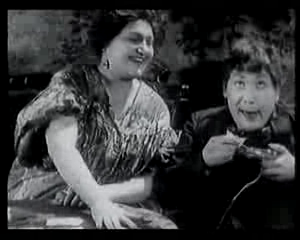Live performance for The Tailor of Torzhok .What we'll be listening today.
Everytime I write cuesheets for building guided-improvised-music for the silents, some last minute changes do happen, and it happened again while watching two previous screenings at this 33rd Pordenone Silent Film Festival.
I expected no copy of Protazanov's 1925 film THE TAILOR OF TORZHOK I will be performing today, but Mr. David Robinson did send a link around 20 days before. With half a month of preparation I was able to setup a cue sheet including references to the music of Shostakovich, Borodin, traditional russian music and some [anachronic] patterns coming from Aram Khacaturian's piano music, plus, (more in a second) little jazz-like tunes. Though, last minute changes happen...
- First of all, I was able to confirm my speculation about the strong, quite strong influence of young Dimitri Shostakovich within the soviet creative scene, while watching Dimitri Zolotov's documentary Searching for Pochta last saturday here. The 2-part film follows the search for Pochta (Post) a lost masterpiece by russian animator Mikhail Tsekhanovskii with the music of Desehov, a pretty well known composer of his time. Though, Tsekhanovskii did also filmed an even more excentric piece called Badla after an opera by Dimitri Shostakovich. After watching and listening fragments at the screening and instantly refreshing 1920s cultural surroundings in my mind, I decided to extreme the use of Shostakovich's music material for the scene and dance-like music (right, jazzy 2-steps coming this way).
- Tsekhanovskii filmed a live action film called Pacific 231 after the music of my beloved film composer Arthur Honegger, whose steady rhythm patterns and wind-instrument-like phrasing was somehow appearing in my own musical ideas... didn't know why... I recognise, just by chance? (UPDATE: I was following the obvious) I then redeemed to the infuence of some rhythmic patterns coming from Honegger's L'idee score prepared for the Berthold Bartosch 1932 film (which was by the way, shown to me some years ago by mexican animator Tania de Leon).
- Third and last but not least, I will be less conservative with absurdity and mickey-mousing, specially after watching to the original vitaphone recoding of When a man loves this last Saturday at the Festival's opening evening. The music by Henry Kindall Handley for the 1927 Manon rendering by filmmaker Alan Crosland was written in five weeks, and is pleagued of beautiful precise modulations, articulation and thrills matching on-screen comic nuances.
- Fourth and last minute: I will be happy to play again with the talented Freiburger-percussionist Frank Bockius, so we can listen to those Kachaturian-like (I know... that's Armenian!) dance and percussive textures.
Let's have fun together. It is time to get to the Verdi Theater.



Comentarios recientes